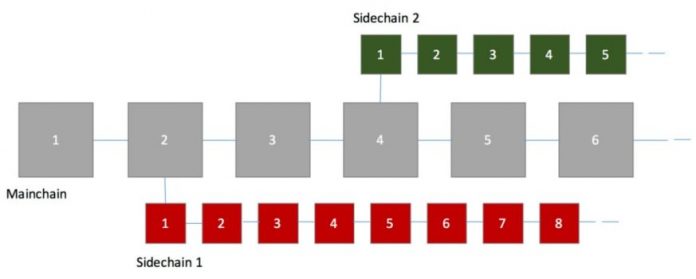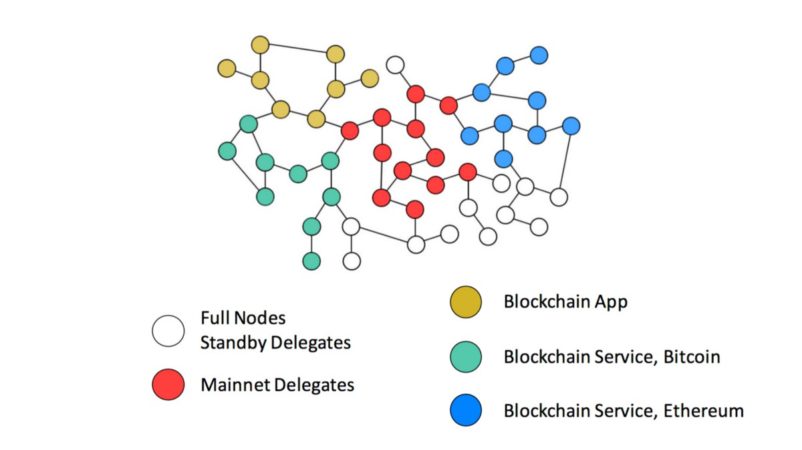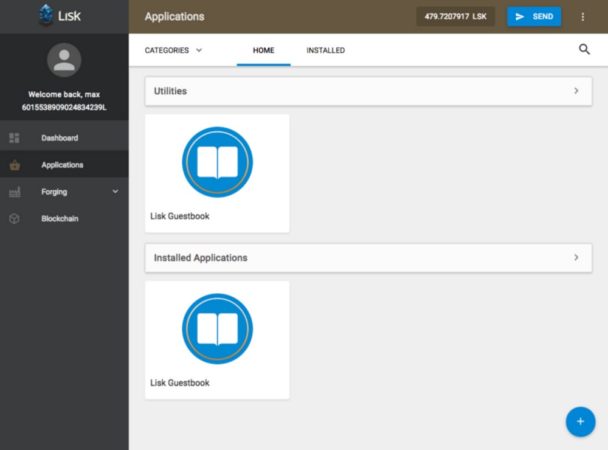
What Is Lisk?
Lisk is a sidechain development platform which makes it easy for developers to build and deploy decentralized applications in Javascript. One of the biggest struggles in the industry is getting developers up to speed on building blockchains and making sense of the granular codebases under the hood.
Developers work extremely hard and are often at the whim of centralized platforms (like Google Play and Apples App Store). These large entities get the lion’s share of the attention and revenues often leaving developers unable to make ends meet. Lisk aims to create a fairer platform for decentralized apps allowing developers to get a bigger piece of the pie.
The project hopes to accelerate and simplify development by focusing on Javascript (not a proprietary new language) ultimately opening their platform to millions of already trained programmers.
In our guide, we’ll take a look at:
How Does Lisk Work?
Specifications
Block Time: 10 seconds
Round Time: ~17 minutes
Supply: 100 million LSK + annual forging rewards (currently 4 LSK per block)
Consensus System: Delegated Proof-of-Stake (DPoS)
Ticker symbol: LSK
Lisk aims to be a platform provider (similar to Ethereum and NEO) with a decentralized network, however, it differs in a number of ways.
Ethereum uses Solidity, requiring devs to learn a new language, and is focused on smart contracts. This back-end focused construct requires third parties to operate as front-end applications (e.g. My Ether Wallet for ERC-20 tokens).
Lisk uses sidechains and a complete Software Development Kit (SDK) to enable a complete kit and kaboodle for developers to produce polished dapps (decentralized applications) and an independent blockchain under one system. This side blockchain is linked to and secured by the separately maintained Lisk blockchain.
Lisk Sidechains in Action
Sidechains
Sidechains are cryptographically independent ledgers (blockchains) that link to the mainchain without hurting performance and speed of the mainchain. This connection ushers in interoperability features such as transferring and synchronizing your tokens between chains.
Ultimately, sidechains allow developers the ultimate level of customizability for consensus algorithms, network scaling, asset tracking and even beta releases of cryptos (e.g. testnets) and tracking of assets (e.g. stocks).
Many sidechain solutions out there are either a single blockchain or private blockchains. Lisk strives to offer the best of both worlds–mainchain stability and security while allowing side chains to have unlimited flexibility.
Developers have full control to create their own blockchain network as a sidechain while the Lisk team maintains the mainchain secured by 101 delegates. If there is ever a bug on that other blockchain, the mainchain remains unaffected.
What Makes Lisk Different?
To make blockchain technology more accessible, the team created a software developers kit (SDK) based on JavaScript with focus on user experience (UI) and developer support.
The SDK consists of four key parts:
- Consensus Algorithm – In the case of Lisk, Delegated Proof of Stake (DPoS) which is also the default setting
- Sidechain – Allows the ability to create an autonomous blockchain linked to Lisk’s main chain
- Back-end – Customizable code for devs to create DAPPS independently
- Front-end – The user interface (UI) which are public facing components
The thought behind this is these independent projects will link to a stable parent chain which has pre-existing scale and robustness. Lisk also has delegates who can help secure the sidechains’ networks.

How delegates secure the sidechain network
By combining the power of the original Lisk network and blockchain with an open-source SDK, developers have the power to create convenient, easy to download digital applications in one package. This app is accessible in a decentralized repository like an app store. LSK tokens are consumed for using the Lisk network and services. (Similar to ether with Ethereum)
This allows developers to focus exclusively on the utility of their app not recreating a new blockchain and all the management that goes along with that.
Example Lisk Blockchain Services
- Identity as a service – A push button instant single sign-on (SSO) for websites requiring registration
- Decentralized hosting as a service – Store media in a decentralized, encrypted cloud on the network
- Smart contract execution as a service – Allows trustless escrow services and eliminates counterparty risk
- Oracles as a service – A way to get customizable real-time data or the result of real-life events
One of the coolest things about having the SDK and open-source ecosystem around the mainchain of Lisk is how the whole system benefits from each new dapp and use case created by developers. Solidity, for example, doesn’t have a library in Lisk but a developer could code Ethereum Virtual Machine (EVM) smart contracts within their own sidechain or as a blockchain service. The whole network would then be able to use that library.
Once completed, the entire Lisk network would now benefit from this new efficiency and offering. As more and more developers jump on board, they will create a powerful network effect and rapid creation of needed apps and services. This bodes well for Lisk by creating more value and utility for developers and users.
Lisk Decentralized App Directory
You can search for any dapp in the ecosystem within the Lisk client (as you would with any App store). All blockchain applications on the platform must register on the mainchain. This registration creates a connection between the Lisk mainchain and sidechain allowing the application directory to find all blockchain applications and services.
During this process, the developer can set a unique app name, description, category, icon, tags, and download link. Very similar to the app or podcast registration process on services like Apple’s app store.

Lisk Dapp Directory
About Lisk
History
With Bitcoin core being written primarily in C++ and Ethereum in Solidity (an independent javascript based framework) there is a lot of confusion for developers about which language to focus on or learn altogether.
Lisk founders Max Kordek and Oliver Beddows saw and experienced these struggles and created a vision to make blockchain technology more accessible. Considering that most of the most popular apps (e.g. Uber) and the web itself runs mostly on Javascript, why reinvent the wheel?
It all began in 2014 with Crypti, an open-source blockchain app platform which was eventually evolved into Lisk. Although successful on a community level, Crypti needed more firepower to reach their vision and forked into Lisk in May 2016.
Team
Max Kordek – President/CEO and Founder
Kordek recognized the potential of blockchain in its early days. He engaged with various communities and absorbed all the info he could find before founding Lisk. He sees major growth ahead and believes that Lisk will be at the forefront of that adoption by providing an easy-to-use Sidechain Development Kit. Outside of work, he is deeply passionate about science fiction.

Max Kordek and the Core Operations Team
Oliver Beddows – Vice President/CTO and Founder
Beddows has twelve years experience in the development field. Like many other blockchain projects, he saw that this kind of technology could be a powerful tool to make the world a more equitable place. He saw that most blockchain platforms were far too complex and there was an opportunity to bring developers into the space with existing skills.

Oliver Beddows and the Core Development Team
Roadmap and Developments
Lisk has not been without its bumps in the road and other challenges. Yet despite this, it has grown into a real project that gains more and more confidence with each milestone completed.
A partnership with Microsoft in 2016 provided the chance for Lisk to provide “Blockchain as a Service” through Azure as well as some industry recognition.
One big, recent development was the decision for a rebrand. Hiring a brand strategy firm and professional designers indicates diligent builders of not only a Blockchain app platform but, a brand. This relaunch has since happened and it’s safe to say that the rebranding has largely succeeded with a much more professional looking appearance which is key to attracting new investors and talent alike.
Competitors
Lisk is competing in a rather crowded space. Ethereum already has a healthy first-mover advantage in the decentralized application platform space. Add to that competition from the likes of NEO, Stratis, and ICON and you may wonder where Lisk will fit in.
Fortunately, most of these projects have their own expertise both in terms of coding languages and geographic location. And as we mentioned earlier, no other project is so heavily focused on the Javascript side of development.
Trading History
LSK began trading in early 2016 and after some initial volatility settled down to a USD price around the $0.30 mark. The price only really started to climb in mid-2017 as the bull market started to take effect. It reached an all-time high price of $38.40 at the beginning of January 2018. This represents an incredible 100x return for those who managed to get in a few years earlier.
Unfortunately, the price has since dropped dramatically along with the overall bear market in cryptocurrencies this year and, at time of update, sits somewhere in the $2.85 level.
Lisk does not currently have a roadmap available, so it’s hard to predict what catalyst may boost the price in the future. As with most projects, additional adoption and partnerships should help.
Where to Buy LSK
Lisk is traded on a variety of exchanges with the top 3 being: Bittrex, Poloniex, and Binance. As with many other cryptocurrencies, you will need to start with Bitcoin (or something to convert into Bitcoin) so you can purchase that pair on your favorite exchange.
How to Store LSK
As a part of the relaunch, the Lisk team has developed a number of alternatives for storing your LSK. The old Nano wallet will soon be discontinued so you’ll need to upgrade to a better solution. Most users will want to get their hands on the Lisk Hub available for Windows and Mac. The Hub adds functionality to the Nano wallet and allows some additional benefits like voting for delegates.
Lisk Core is a wallet solution for advanced users only and has a command line dashboard without GUI. If you want to set up your own full node, this wallet is for you. Finally, Lisk Mobile is also out and provides some limited functionality, though power users will probably want one of the desktop versions instead.
All of the above wallets can be found on the official Lisk download page.
Conclusion
Lisk has been a very slow and steady player. In a world of “flavor of the month” ICOs, it’s refreshing to see consistent development, milestones reached, and gradual improvements.
Since the days of Crypti, both founders have been with the project keeping a watchful eye on their brainchild. From a fledgling kitchen table full of coders to a much bigger flourishing team with nice offices in Berlin, Germany, Lisk has come a long way.
While many think of Lisk as an “Ethereum killer”, a closer look reveals that project is simply another great up and coming player (among many) in a nascent crypto world that is being built right before our eyes.
While Ethereum is focused on smart contracts and mechanisms in Solidity as a back-end tool, Lisk hopes to capture the hearts and minds of both (JavaScript) developers and users alike.
Their SDK based on Javascript has a simplicity that’s easy to miss. Why reinvent the code of the internet when so many developers already know and use it? This is where Lisk resisted the urge to come up with something proprietary and instead is using pre-existing frameworks allowing them to access a much larger developer pool faster.
Only time will tell (and decide) who is the king of the Crypto mountain and Lisk steadily (and quietly) grows as an incumbent to be considered for that role.
This article was updated by Ryan Smith on 11.08.2018 to reflect the recent changes of the project.
Find more info about the project on the following channels:
The post What Is Lisk (LSK)? | A Guide to the Sidechain and Dapp Platform appeared first on CoinCentral.

Coincentral.com is author of this content, TheBitcoinNews.com is is not responsible for the content of external sites.
Our Social Networks: Facebook Instagram Pinterest Reddit Telegram Twitter Youtube











